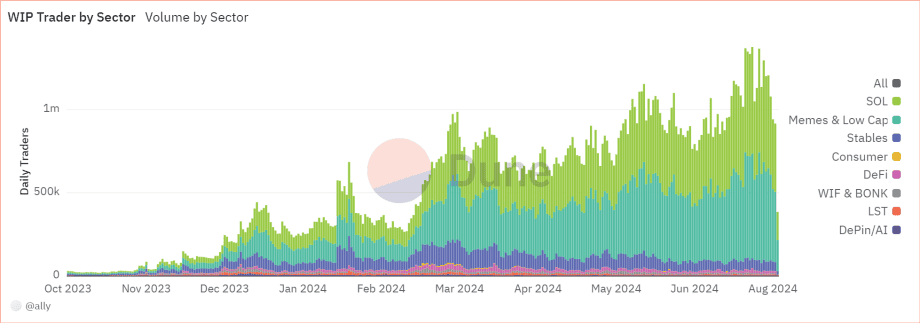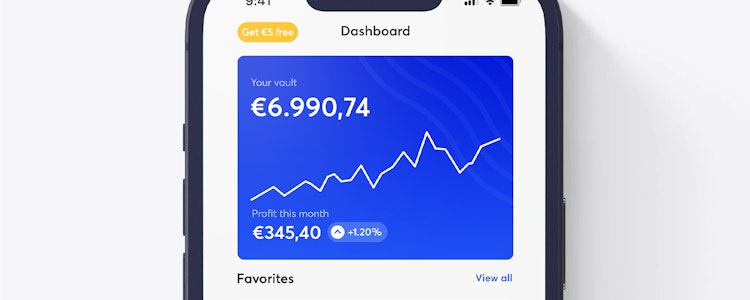News - Will Solana struggle in 2025?
Solana has experienced explosive growth. But can that continue in 2025? Blockchain faces a number of challenges.
In this article you will read:
How massive Token Unlocks can affect the stock price
Why there is criticism of new features
How dependent Solana currently is on memecoins
Solana has had an impressive time. The blockchain was the best-performing of the major cryptocurrencies in 2023 and just continued in 2024. Several analysts are even predicting a share price of $1,000 or more - even during the bull run. But problems appear on the horizon that could stop Solana's growth and share price in 2025. The three biggest challenges are: massive Token Unlocks and inflation, a controversial scaling solution, and a heavy reliance on memecoins.
$1,000 or more - there are plenty of reasons for these optimistic predictions: A historic update is expected with Firedancer around 2025, more and more new apps and features are being launched, and collaborations with heavyweights such as PayPal and Visa are around. In many areas, Solana is hot on Ethereum's heels or has already overtaken Ethereum.
But much of the growth in recent months is due to trends that are not very sustainable: mainly Airdrop-Farming and memecoins. What is still missing is a real "killer app" that brings organic growth. It was also recently claimed that many of Solana's impressive numbers are artificially inflated. There are more challenges, however.
Massive Token Unlocks and Inflation in 2025
Token Unlocks depress crypto coin prices because it increases the number of tokens in circulation. Especially in the first four months of 2025, record numbers of new SOL tokens will enter the market. "That looks frightening," says crypto journalist Mando.
SOL Q1 unlocks starting to look a little scary
— Mando (@rektmando) September 3, 2024
Really need activity to pick up again pic.twitter.com/Nt5ypbEqVD
A total of 17.5 million new tokens will come into circulation. More than in all of 2024 and also more than in 2026. That equates to a value of about $2.5 billion right now, or about three percent of the total market capitalization. If Solana really goes to a rate of $1,000, we're talking even close to $20 billion.
Added to this is annual token inflation of about five percent, which is necessary because of the low transaction fee model, among other things to pay validators and stakers. This inflation is reduced by 18 percent each year. So the market must be able to absorb a lot of demand. The question that therefore arises: To whom do these SOL tokens go (we have no way of knowing) and are they sold or rather staked, or withdrawn from circulation again?
New controversial feature
One of the big advantages of Solana is that all processes take place on a strong, fast and cheap Layer 1. The philosophy behind this, often repeated by big names within Solana: Layer 2s like Arbitrum and others used on Ethereum to scale are parasitic. They take activity and revenue away from the actual blockchain. But now things are turning around. Critics argue that Solana himself uses similar Layer 2 solutions, but calls them differently: Network Extensions.
Most of the L2-ish things on Solana are better thought of as Network Extensions. While the underlying tech stack might resemble bitcoin or ethereum L2’s, the function and role is so radically different I think founders would best be served by Network Extensions
— Austin Federa | 🇺🇸 (@Austin_Federa) September 2, 2024
"Most things that look like Layer 2 at Solana are better thought of as Network Extensions," said Austin Feder, Chief of Strategy at Solana, on Twitter. "While the underlying tech stack may resemble Bitcoin or Ethereum L2s, the function and role are so radically different that I think founders are better served with Network Extensions."
Critics, especially from the Ethereum community, don't see the difference. Nick White, Chief Operator of Celestia, says: "They do the same thing, but call it differently."
DeFi specialist Ignas warns that this could put Solana in a bad position in the long run. The reason: While Layer 2s provide better scalability, they also create more security issues and a more complicated user experience, often making use more cumbersome. This runs counter to Solana's promise: fast and easy to use, all on the same Layer 1.
https://t.co/Xv7CUWDnE1 pic.twitter.com/kvb5QmfgCK
— Owocki.Ξth (🍄,🟢) (@owocki) September 2, 2024
"ETH was caught between BTC and SOL during the bullrun. BTC was the "better money" for less conservative and institutional investors, and SOL was a faster, easier and cheaper smart contract platform with more potential than ETH. If Solana's story changes from a monolithic model to scaling with L2s (like Ethereum), SOL could become the new ETH. [...] then SOL is really in a tough position."
Heavy reliance on memecoins
High risk, high reward, big losses - a digital casino. The memecoin sector has dominated this bullrun for a long time. And its biggest profiteer: Solana. According to figures from Dune: memecoins and so-called Low Caps (tokens with low market capitalization) make up about half of the total trading volume on Solana, in addition to trading in the coin itself.
Remarkably, pump.fun was for months the most profitable platform on Solana: it is the new incubator for the launch of memecoins. What you need for that: two dollars and a click. In recent weeks, some 15,000 to 18,000 tokens have been created daily. If they manage to reach a liquidity of $69,000, they will appear on Raydium, Solana's largest decentralized exchange. Success rate: about 1 percent.
But with that also comes a great danger: Nothing in this sector is as volatile as the controversial memecoins. The hype has been leveling off for a while. If it were to disappear, it would be a severe blow to Solana. In other words, innovation is important to Solana. It has the right way to go, but can it continue down this path?







